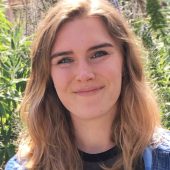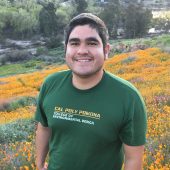Re-envisioning graduate education from Ridge to Reef
Born from a need to give graduate students a broad skill set and more career-oriented training, UC Irvine’s Ridge to Reef Program (R2R) has been a major success. R2R, funded by a $3 million grant from the National Science Foundation, creates opportunities for learning that are often missing from a traditional PhD program. R2R aims to provide graduate students with the chance to develop their communication skills, learn how to market themselves, and connect with the world outside of academia.


Andie Nugent, a PhD student in Ecology and Evolutionary Biology, has nothing but amazing, positive things to say about R2R. Andie noted that R2R has helped her “fill in those gaps” typical of traditional PhD programs. She has honed her communication skills, connected with students across disciplines, and expanded her writing abilities. Together, these skills make her a more confident and prepared scientist.
A key element of R2R is a focus on the skillsets students need to build relationships and serve their communities. Through a required science communication course, the program trains students in marketing themselves. While Twitter and other social media may seem tangential to science, for Andie, learning how to use these tools effectively makes science “more approachable and useful.” The communication course has also been valuable for David Banuelas, another ecology student in the R2R program. The experience allowed him to recognize his strengths and discover which agencies could use the skills he has to offer.
The program also offers fellowships to free up time for graduate students to prioritize their learning and career development. Both David and Andie cited the fellowship as a huge plus. It enabled them to dedicate time to research, outreach, and building connections. It also alleviated some of the financial stress that can weigh on students pursuing higher education.
R2R students don’t just come away with a broader set of skills that they can apply in theory. Many students have made connections that have blossomed into real job opportunities. The program’s curriculum entails an internship or partnership based on the students’ research goals and interests, putting the knowledge they have gained from R2R into practice.
Andie and David both appreciate the chance to explore career options. Andie studies soil health in urban areas and wants to connect with the community to apply her research expertise. David focuses on habitat protection and conservation. He has been able to work with the Newport Bay Conservancy and do research in the redwoods, experiences that may not have been possible without R2R.
Faculty mentors in R2R, such as Donovan German, also see the benefit of the program. Dr. German expressed pride in R2R advisees like Michelle Herrera, who recently graduated with a PhD in Ecology and Evolutionary Biology and landed a position at the San Diego Zoo working with rhinos. Dr. German said this outcome was a dream-come-true for his former student.
Perhaps one of the most unique features of the R2R program is that it’s really an experiment in graduate education. Steven Allison, who runs the program, is not afraid to admit that R2R has changed a lot since its inception. Yearly questionnaires and interviews let students tell program leaders what’s working and what’s not. This feedback has contributed to many revisions of the program curriculum, which have been, as Dr. Allison stated, “for the better.”
R2R’s success is encouraging and inspiring. The focus on students and their professional needs is a tremendous value. Now finishing its fourth year, there is broad support to continue the program beyond its original five-year funding period. The world needs the kind of problem-solvers that R2R aims to foster—students like Andie and David who are equipped to collaborate across disciplines and integrate perspectives from the sciences with other fields like the humanities and policy. Hopefully, R2R can serve as a model for how graduate education can make a much-needed shift toward collaboration, interdisciplinarity, and real-world applications.

